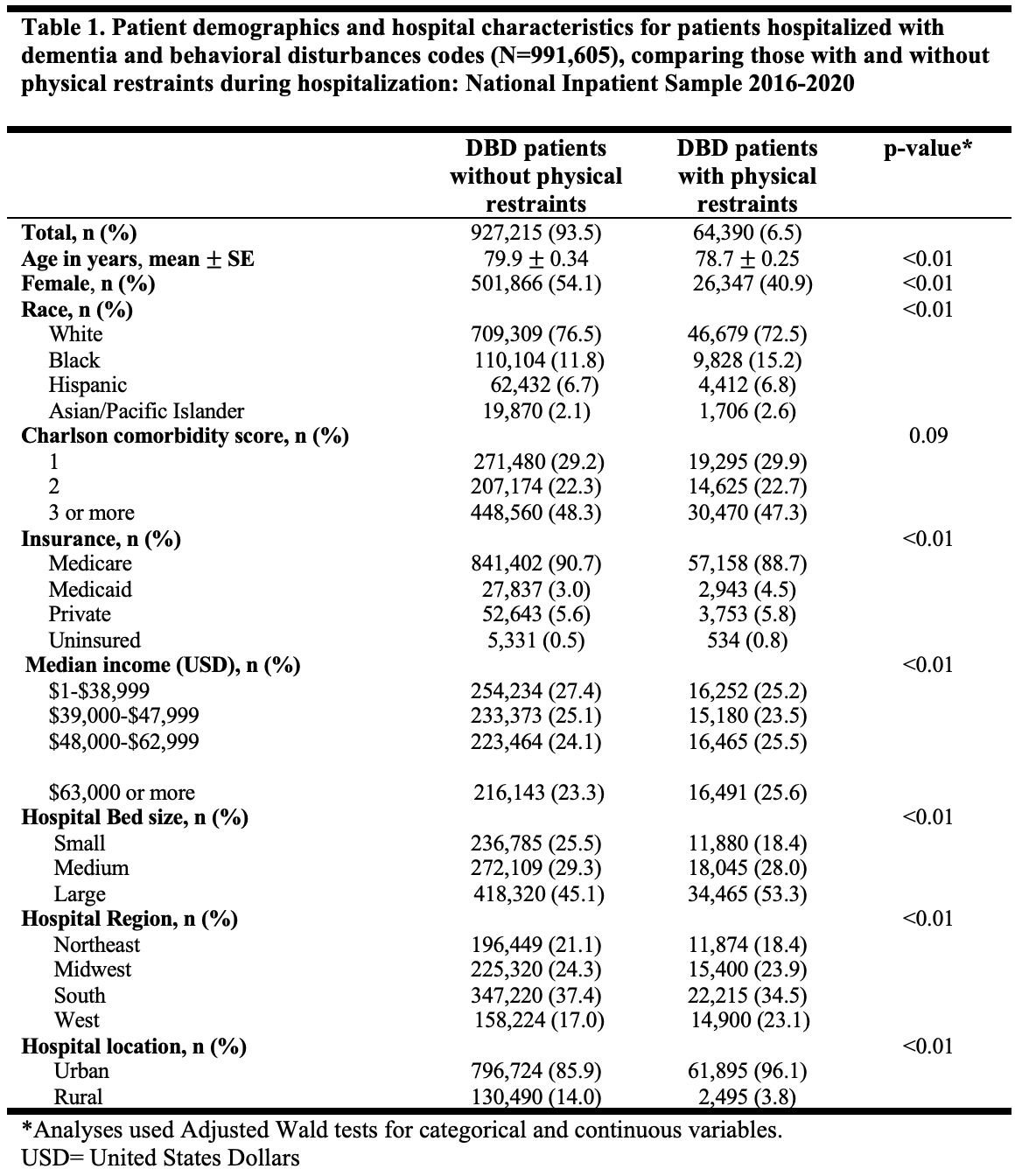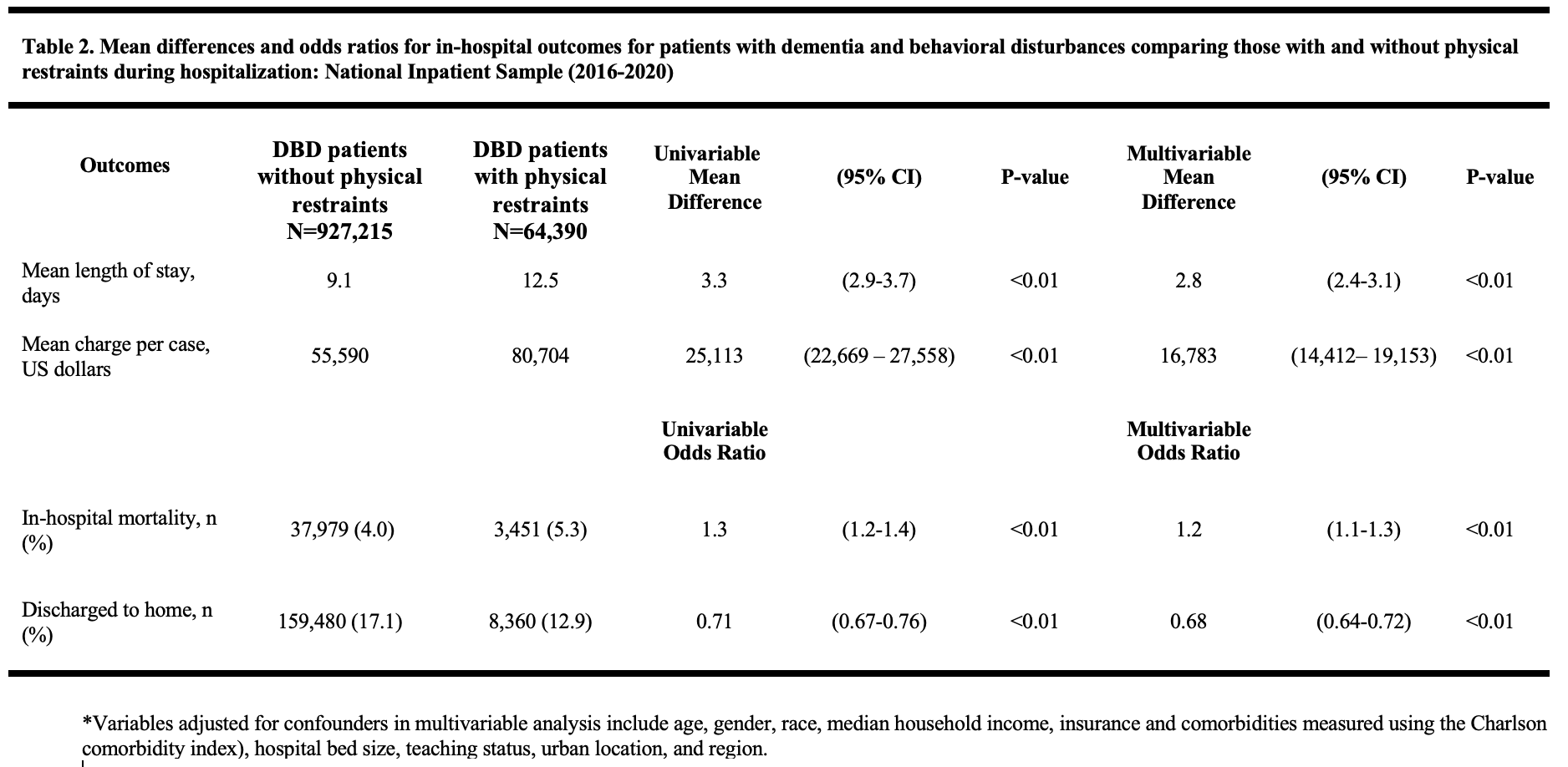Background: Physical restraint use among patients hospitalized with dementia and behavioral disturbances has not been studied on a national level in the United States. We aimed to determine rates of physical restraint use among hospitalized patients with dementia and behavioral disturbances and to characterize associations with mortality and utilization metrics.
Methods: National Inpatient Sample database years 2016 through 2020 were used to compare physically restrained and non-restrained patients with dementia and behavioral disturbances. Multivariable regression analyses were used to assess in-hospital patient outcomes i.e. prevalence of physical restraint use, in-hospital mortality, length of stay, total hospital charges, and post-discharge disposition.
Results: There were 991,605 patients coded for dementia with behavioral disturbances. Among these, 64,390 (6.5%) had physical restraints and 927,215 (93.5%) did not. Patients with restraints were younger (mean age ± standard error: 78.7 ± 0.25 vs. 79.9± 0.34; p< 0.01) and more often male (59.0% vs 45.8%; p < 0.01). A higher proportion of black patients were restrained (15.2% vs. 11.8%; p< 0.01) and physical restraints were used more frequently in larger hospitals (53.3% vs 45.1%; p< 0.01). Those with physical restraints had a longer length of stays (adjusted Mean Difference {aMD}= 2.8 days CI [2.4-3.1]; p< 0.01) and higher total hospital charges (aMD = $16,783 CI [14,412-19,153]; p< 0.01). There was a higher-odds for in-hospital mortality (adjusted Odds Ratio {aOR}=1.2 [CI 1.1-1.3]; p< 0.01) and lower odds to be discharged to home after hospitalization (aOR = 0.68 [0.64-0.72]; < 0.01) for patients with physical restraints compared to those without.
Conclusions: Among patients hospitalized with dementia and behavioral disturbances, those for whom physical restraints were used had worse outcomes. Attempts to limit physical restraint use whenever possible may improve outcomes in this vulnerable population.


